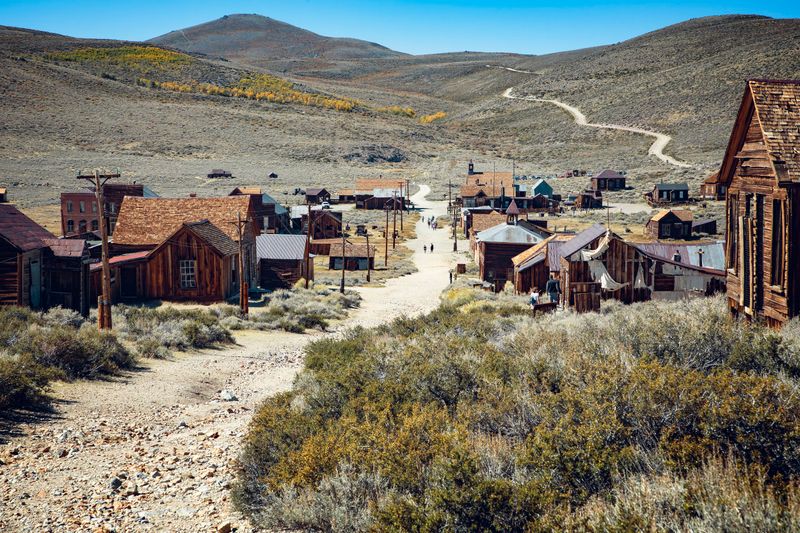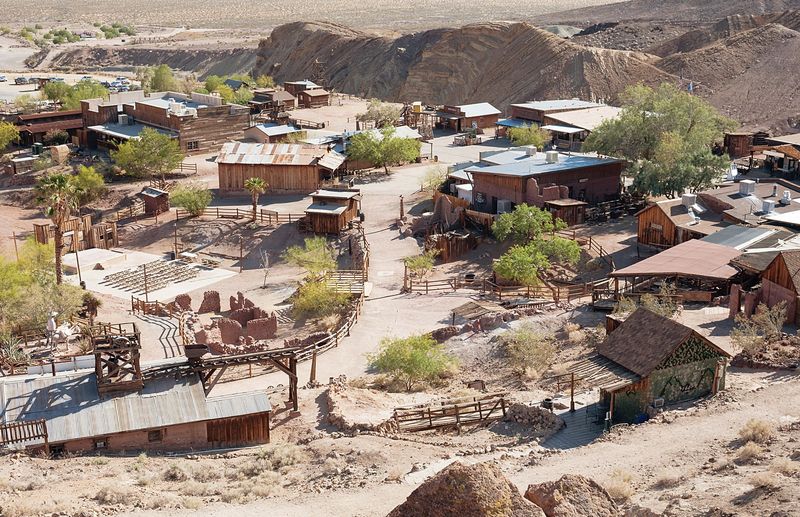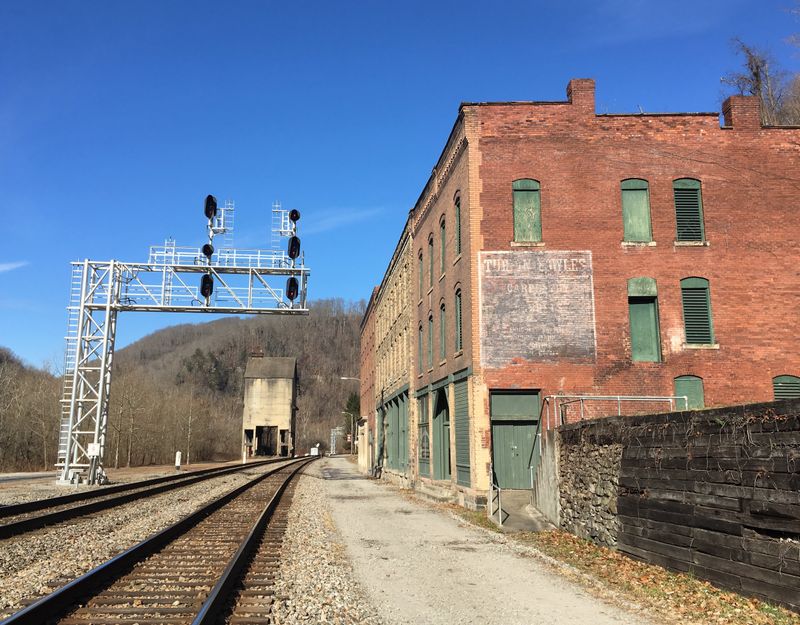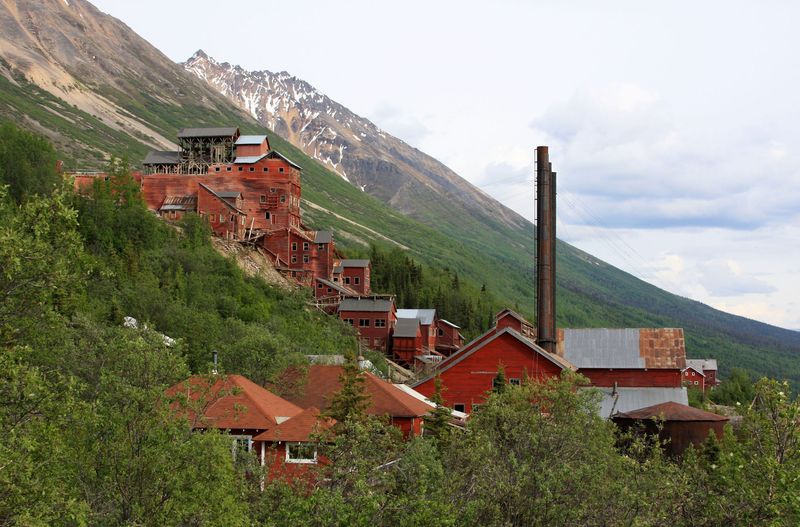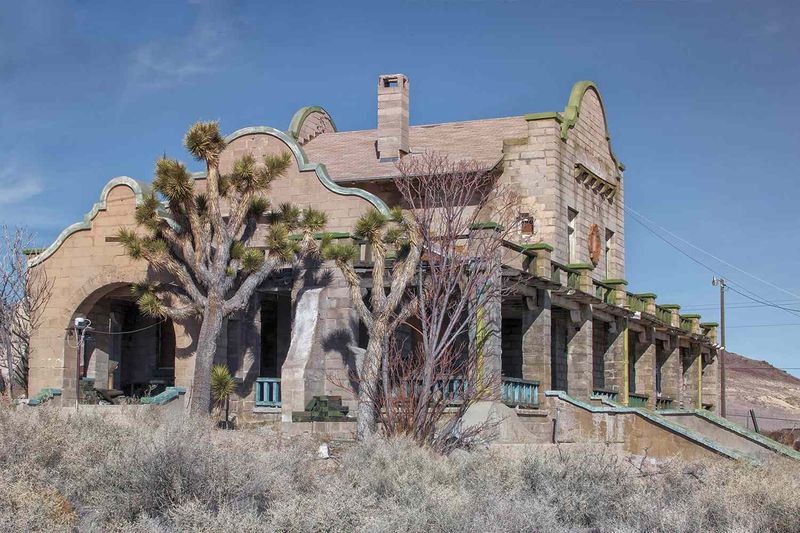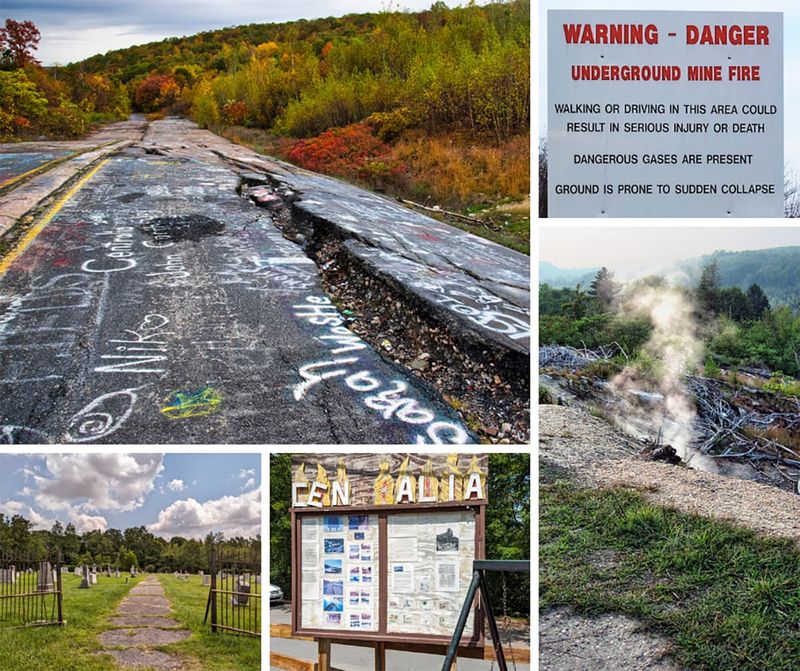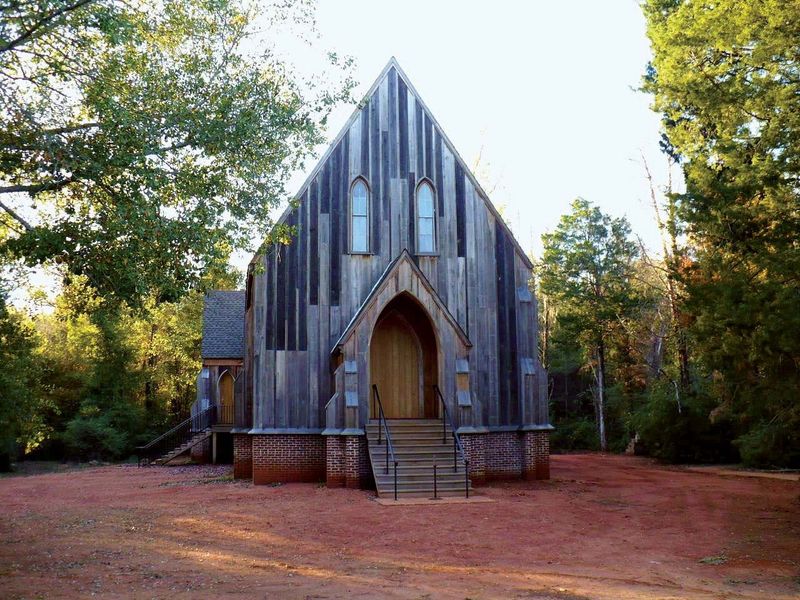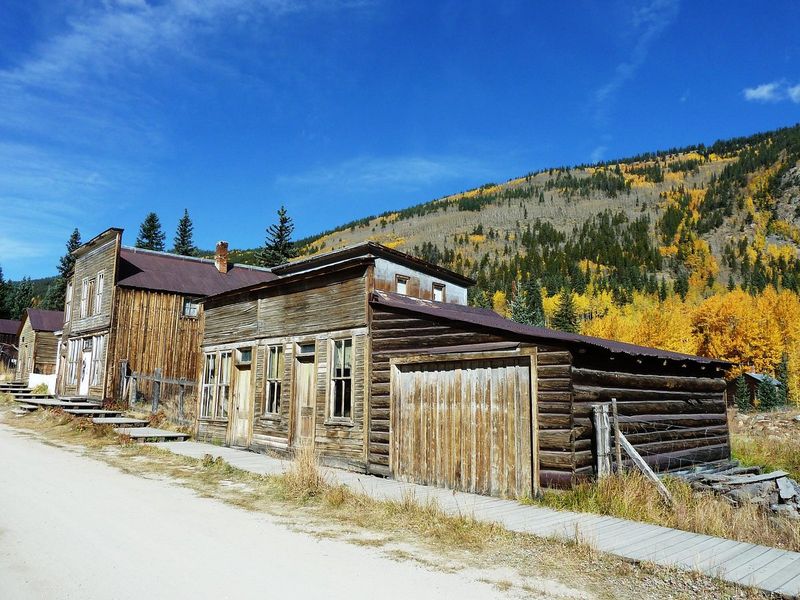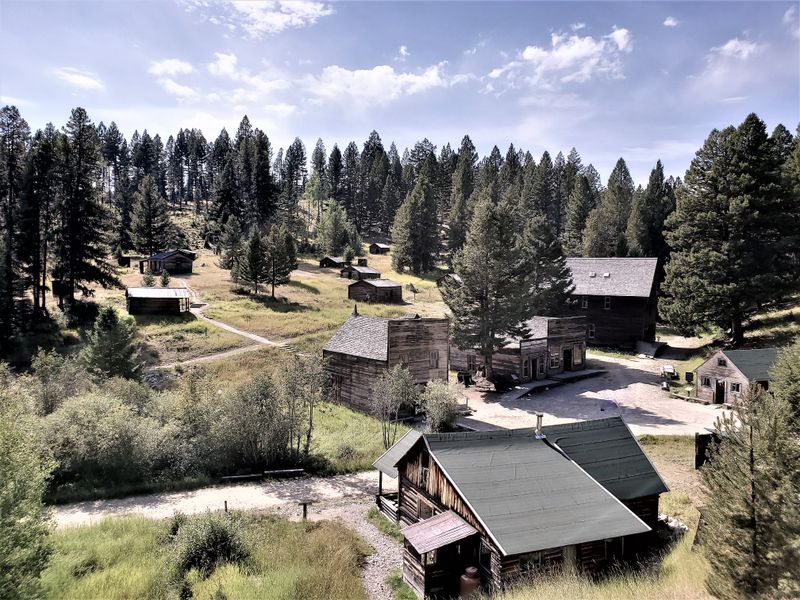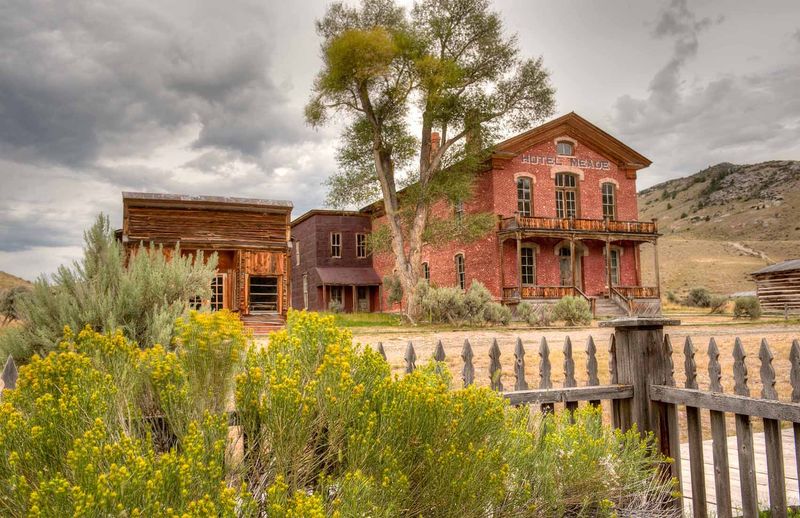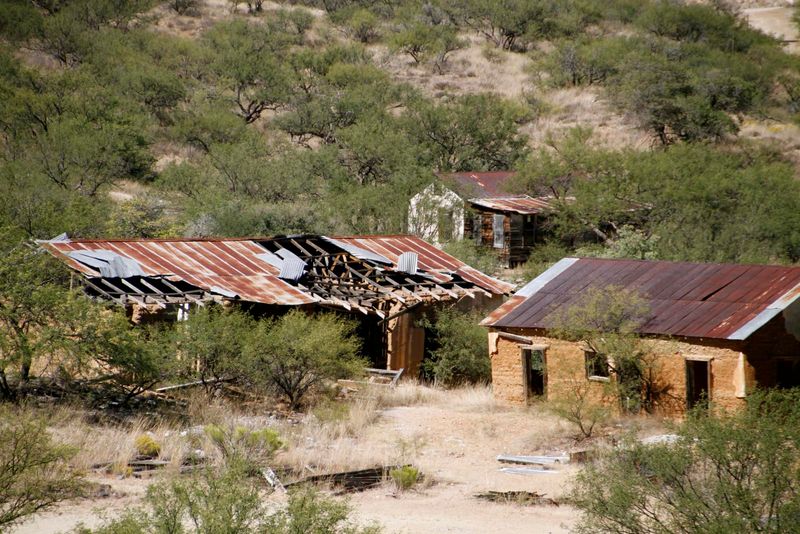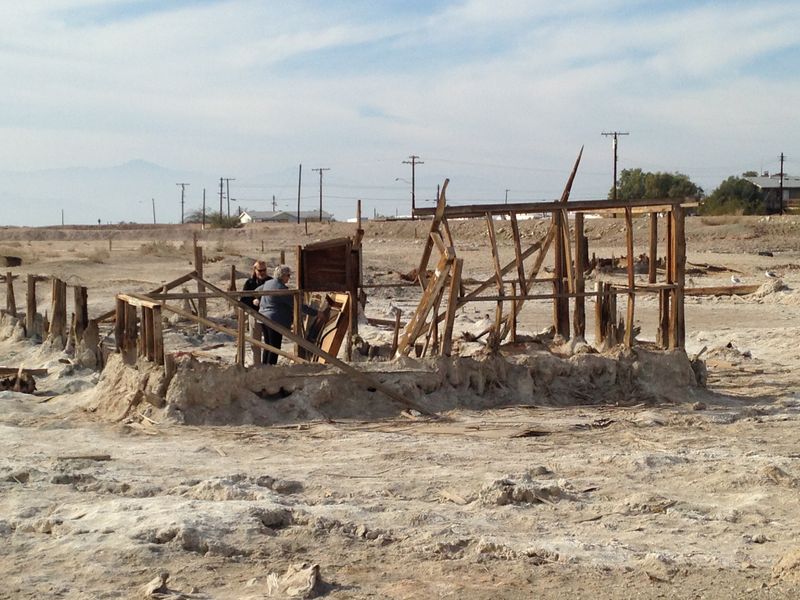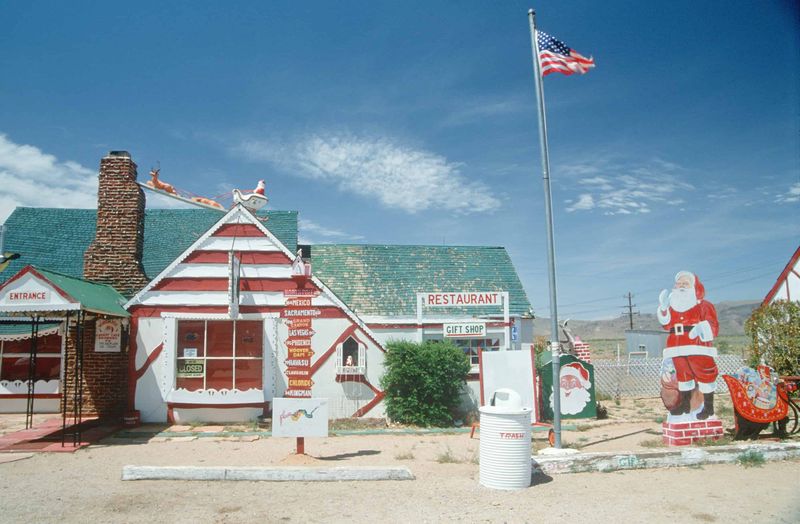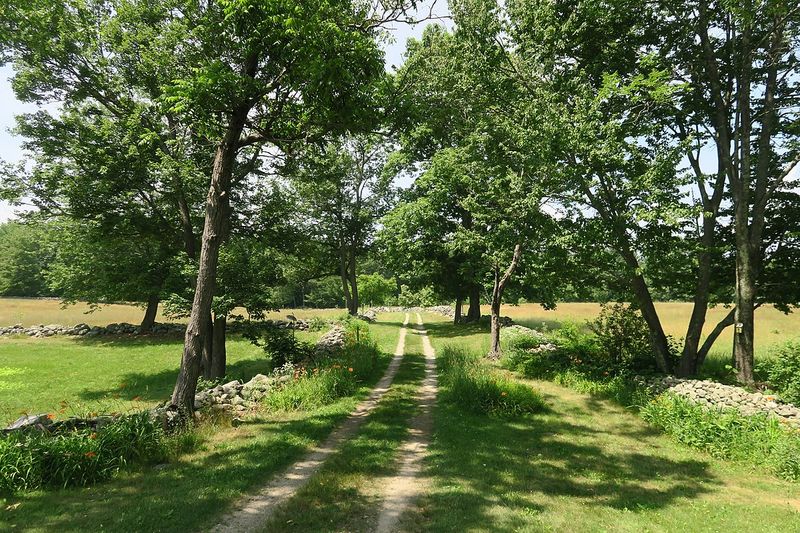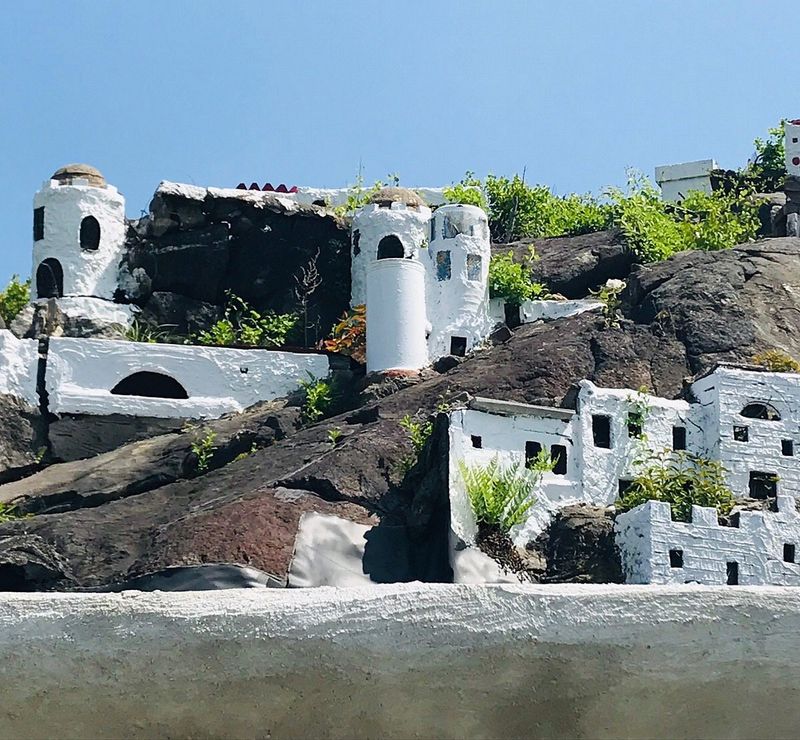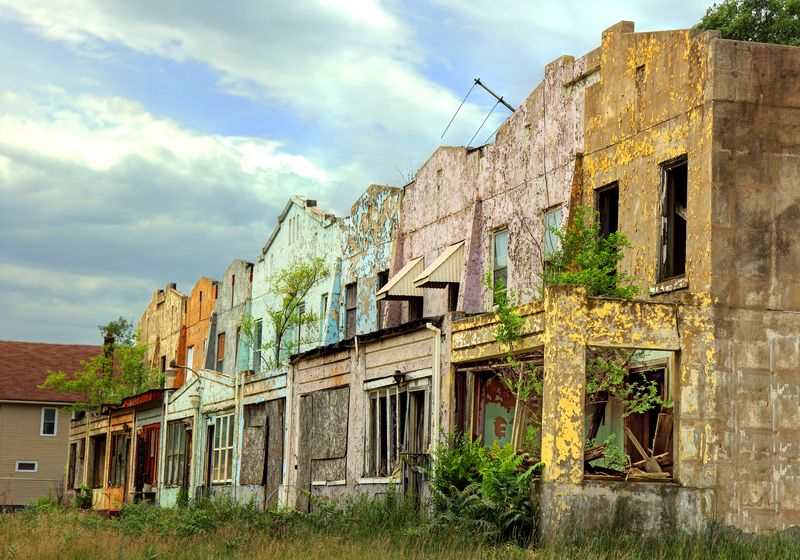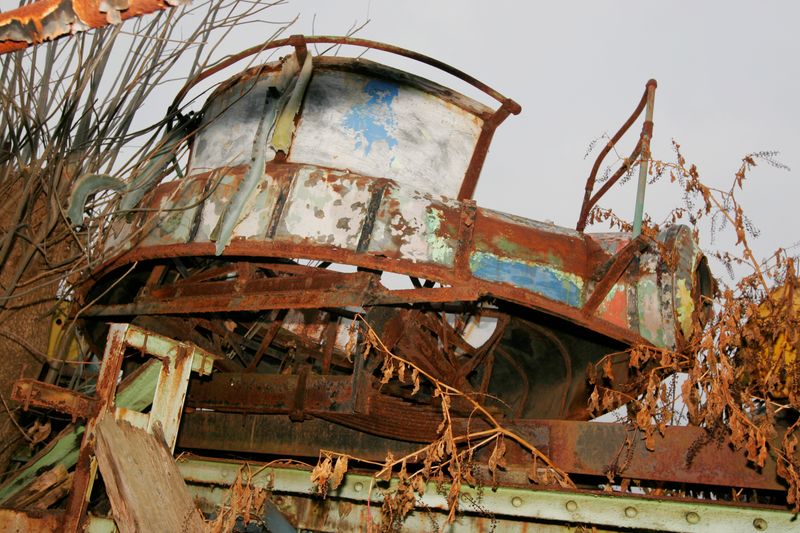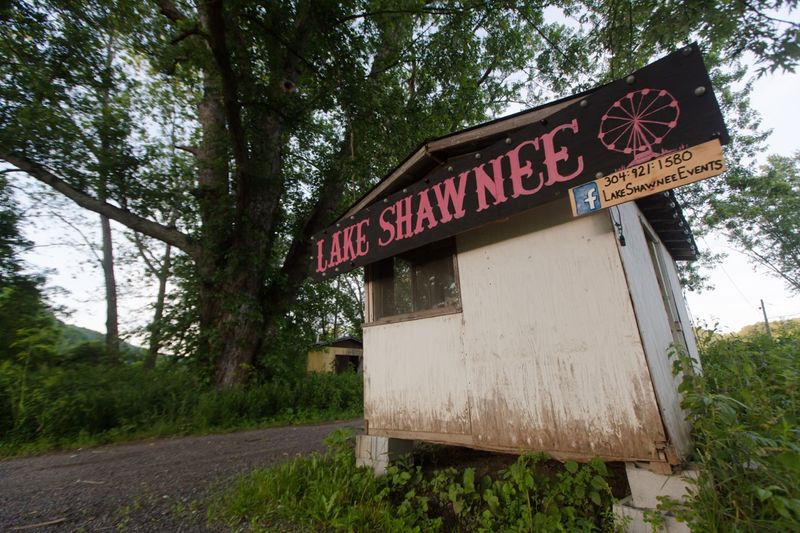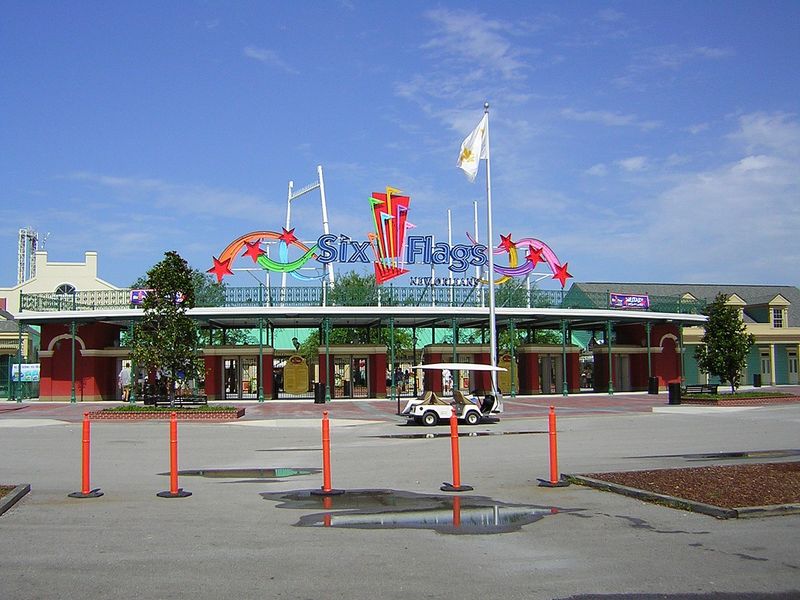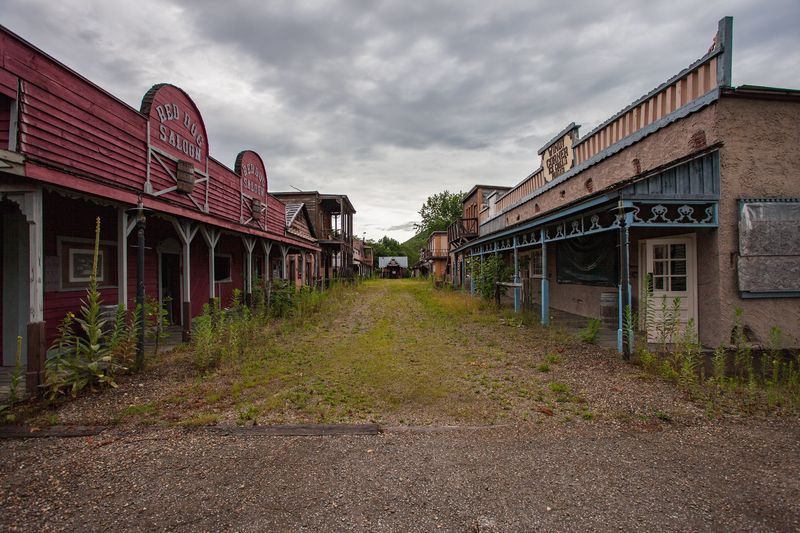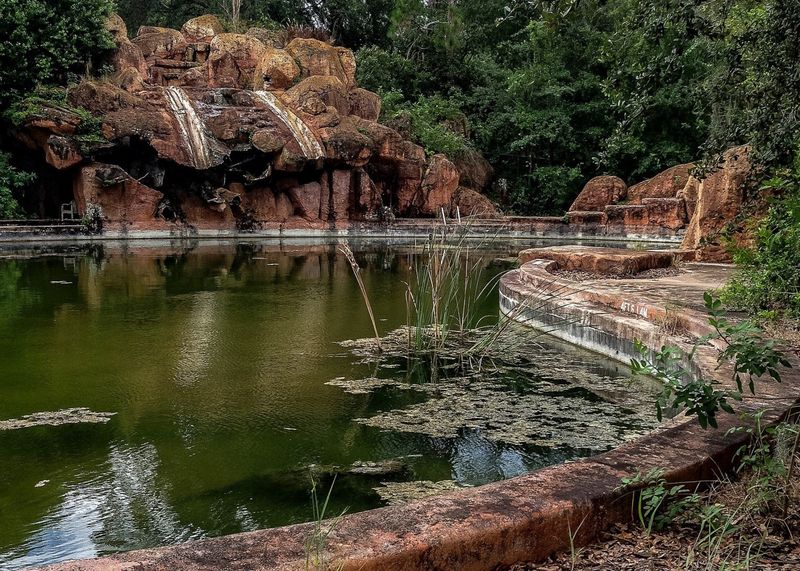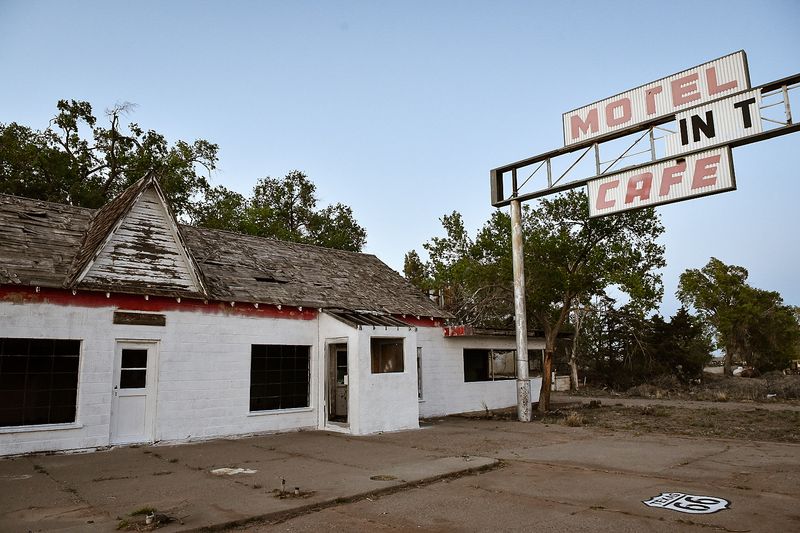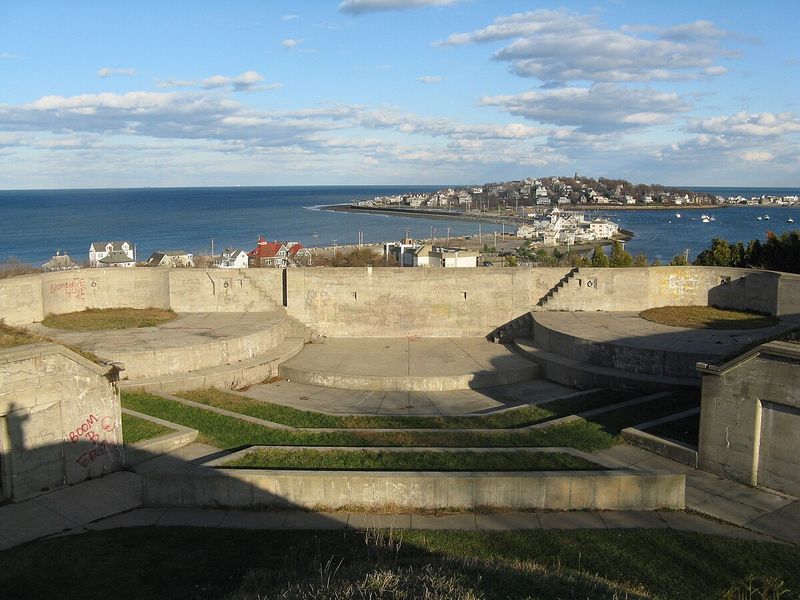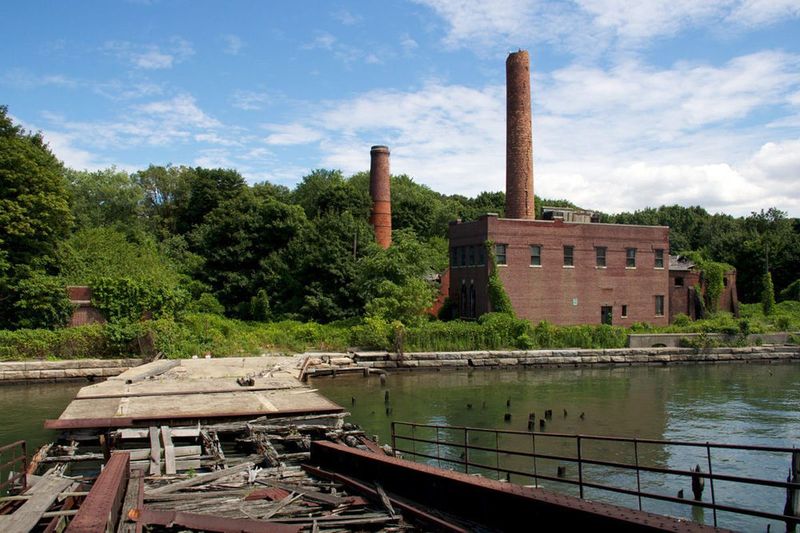Explore the fascinating tales of once-thriving American landmarks now standing silent. These places once thrived with human activity but have since been left to the elements, creating a haunting beauty that attracts curious explorers.
From bustling gold rush towns to amusement parks that echoed with laughter, these 25 landmarks offer a glimpse into the past and the forces that led to their decline.
Join us on a journey through history as we visit these iconic locations and uncover the stories behind their rise and fall.
1. Bodie Ghost Town, California
Bodie, once a bustling gold-mining town in California, now stands as a ghost town frozen in time.
Established in the late 1800s, Bodie thrived during the gold rush era, attracting thousands of prospectors. However, as the gold veins depleted, the town’s fortune waned.
Visitors today can wander through the deserted streets, peeking into the preserved buildings that tell tales of its vibrant past. The dry, dusty air and creaking wooden structures create an eerie yet captivating atmosphere.
Bodie’s story reflects the boom-and-bust cycle of many mining towns across the American West.
2. Calico Ghost Town, California
Calico, nestled in the Mojave Desert, was once a lively silver mining town in California. Founded in 1881, it boasted over 500 mines and a bustling community, drawing miners and businesses alike.
However, by the turn of the century, silver’s price plummeted, leading to Calico’s decline.
Today, Calico stands preserved as a historical park, offering a glimpse into its glory days. Visitors can explore the restored buildings and imagine life in this once-flourishing town.
Despite its desolation, Calico’s colorful past continues to attract tourists, keeping its memory alive.
3. Thurmond, West Virginia
Thurmond, once a thriving railroad town in West Virginia, played a pivotal role in the coal industry during the early 1900s.
Trains laden with coal would pass through, making Thurmond a bustling hub. However, changes in transportation and the decline of coal led to its abandonment.
Today, the town is part of the New River Gorge National Park, preserving its historic structures. The silence of the once-busy train tracks echoes the area’s past prosperity. Thurmond’s story highlights the impact of industrial shifts on small towns across America.
4. Kennecott, Alaska
Kennecott, located in Alaska, was a bustling copper mining town in the early 20th century. The discovery of rich copper deposits attracted workers and families, establishing a vibrant community.
However, by 1938, the copper was depleted, and residents moved away. Now a national historic landmark, Kennecott draws visitors eager to explore its well-preserved buildings.
The striking contrast between the red wooden structures and the surrounding wilderness provides a picturesque scene. Kennecott serves as a reminder of Alaska’s mining history and the transient nature of boomtowns.
5. Rhyolite, Nevada
Rhyolite, once a promising mining town in Nevada, flourished briefly in the early 1900s. At its height, the town featured a stock exchange and opera house, embodying the hope of newfound wealth. Yet, as the mines failed, so did Rhyolite’s prosperity.
Today, it’s a ghost town with haunting stone ruins and quirky art installations, offering a stark reminder of its fleeting glory.
The surreal desert backdrop enhances its mystique, attracting photographers and history enthusiasts. Rhyolite’s swift rise and fall illustrate the volatility of mining towns.
6. Centralia, Pennsylvania
Centralia, Pennsylvania, known for its underground coal mine fire burning since 1962, transformed from a lively town to an eerie ghost town. Once home to over 1,000 residents, the fire led to dangerous conditions, forcing evacuations.
Today, smoke seeps from the ground, creating a surreal scene. The abandoned streets, with cracked pavements and encroaching vegetation, hint at the community that once thrived here.
Centralia’s story serves as a haunting reminder of the consequences of industrial disasters and their long-lasting impact on communities.
7. Cahawba, Alabama
Cahawba, Alabama’s first state capital, thrived briefly in the early 1800s. Its strategic location at the confluence of two rivers made it a bustling political and commercial hub. However, frequent flooding and yellow fever outbreaks led to its decline.
Today, Cahawba is an archaeological site with scattered ruins and overgrown paths, offering a window into its storied past.
Visitors can explore remnants of its infrastructure while imagining its former significance. Cahawba’s demise illustrates the challenges faced by early American settlements.
8. St. Elmo, Colorado
St. Elmo, a well-preserved ghost town in Colorado, was once a bustling mining settlement in the late 1800s.
The discovery of gold and silver attracted miners and their families, establishing a thriving community. However, by the 1920s, the mines closed, and residents left.
Today, St. Elmo remains remarkably intact, with wooden storefronts and dirt roads, offering a glimpse into its heyday.
The surrounding mountains add to its picturesque setting, drawing visitors interested in Colorado’s mining heritage. St. Elmo stands as a testament to the transient nature of mining towns.
9. Garnet, Montana
Garnet, nestled in Montana’s rugged wilderness, was a thriving mining town in the 1890s. Rich gold deposits attracted miners, and the town flourished with hotels, saloons, and businesses. However, as gold became scarce, Garnet’s population dwindled.
Today, it is one of Montana’s best-preserved ghost towns, offering an authentic glimpse into the past. Visitors can explore the wooden cabins and imagine life during its peak.
The serene setting amidst pine trees adds to the town’s allure. Garnet’s story reflects the impermanence of mining booms.
10. Bannack, Montana
Bannack, founded in 1862, was Montana’s first territorial capital and thrived during the gold rush. The discovery of gold in Grasshopper Creek brought miners seeking fortune. The town quickly developed with hotels, a school, and a jail.
However, as gold dwindled, so did Bannack’s population. Today, it is a state park, preserving over 60 structures. Visitors can walk through history, exploring the well-preserved buildings.
Bannack’s story highlights the fleeting nature of gold rush towns and their impact on American history.
11. Ruby, Arizona
Ruby, once a thriving mining town in Arizona, reached its peak in the early 20th century. Rich ore deposits attracted miners and their families, establishing a bustling community. However, as the mines closed, Ruby’s population dwindled.
Today, it stands as a ghost town with crumbling adobe structures and desert vegetation, offering a glimpse into its past.
The desolate landscape adds to its haunting beauty, drawing history enthusiasts and photographers. Ruby’s decline mirrors the fate of many mining towns across the American Southwest.
12. Bombay Beach, California
Bombay Beach, once a popular resort destination by the Salton Sea in California, thrived in the mid-20th century.
Tourists flocked to its shores for water sports and entertainment. However, rising salinity levels and pollution led to ecological decline, driving residents and visitors away.
Today, the town is a mix of abandoned buildings and quirky art installations, creating an intriguing blend of decay and creativity.
The eerie, salt-encrusted shoreline reflects its environmental struggles. Bombay Beach’s story underscores the impact of environmental changes on communities.
13. Santa Claus, Arizona
Santa Claus, Arizona, was a whimsical tourist destination built in the 1930s with a Christmas theme, attracting families year-round. Its festive attractions and themed buildings offered a unique desert retreat.
However, the novelty wore off, and by the late 1970s, the town was abandoned. Today, its deserted, Santa-themed buildings stand as a curious relic.
The stark contrast between festive decorations and the barren desert creates a surreal scene. Santa Claus, Arizona, serves as a reminder of how novelty attractions can quickly fade.
14. Monson Village, New Hampshire
Monson Village in New Hampshire, founded in the mid-1700s, was one of the earliest settlements in the region. Settlers established farms and a thriving community. However, harsh winters and poor soil quality led to its decline by the early 1800s.
Today, only stone foundations and cellar holes remain, reclaimed by the forest. The tranquil setting offers a glimpse into colonial life and the challenges faced by early settlers. Monson Village’s story reflects the difficulties of sustaining early American communities.
15. Holy Land USA, Connecticut
Holy Land USA, once a popular religious theme park in Connecticut, opened in the 1950s. It featured biblical scenes and attractions, drawing thousands of visitors. However, as interest waned, the park fell into disrepair by the 1980s.
Today, it stands abandoned, with crumbling structures and overgrown paths. Despite its decay, the park’s spiritual aura persists, attracting urban explorers and nostalgia seekers.
Holy Land USA’s decline highlights the challenges of maintaining themed attractions over time.
16. Gary, Indiana
Gary, Indiana, once a thriving industrial hub, was founded in 1906 by U.S. Steel. Its factories and steel mills attracted workers and built a robust economy. However, deindustrialization in the late 20th century led to economic decline and population loss.
Today, Gary’s landscape is marked by abandoned factories and deteriorating urban areas. The city’s story serves as a cautionary tale of the impacts of industrial changes and economic downturns.
Despite its challenges, efforts to revitalize Gary continue, reflecting resilience in the face of adversity.
17. Cairo, Illinois
Cairo, Illinois, situated at the confluence of the Mississippi and Ohio Rivers, was a bustling river port in the 19th century. Its strategic location made it a commercial hub. However, racial tensions, flooding, and economic shifts led to its decline.
Today, Cairo is marked by abandoned historic buildings and empty streets. The town’s decline reflects broader social and economic challenges faced by river towns. Cairo’s story is a poignant reminder of the complex factors influencing urban decay.
18. Chippewa Lake Park, Ohio
Chippewa Lake Park, once a lively amusement park in Ohio, operated from 1878 to 1978. It offered rides, games, and entertainment, drawing families for a century. However, changing leisure trends and financial difficulties led to its closure.
Today, the park is a haunting scene of rusted rides and overgrown pathways. Nature has reclaimed much of the area, adding to its eerie charm.
Chippewa Lake Park’s decline highlights the challenges faced by traditional amusement venues in adapting to modern entertainment trends.
19. Lake Shawnee Amusement Park, West Virginia
Lake Shawnee Amusement Park in West Virginia opened in the 1920s, offering a lakeside retreat with rides and attractions. However, tragic accidents and financial issues led to its closure in the 1960s.
Today, the park’s rusting rides and ghostly atmosphere draw curiosity and tales of hauntings. The overgrown landscape adds to its mystique.
Lake Shawnee’s story intertwines local legend with the challenges faced by amusement parks in maintaining safety and profitability.
20. Six Flags New Orleans, Louisiana
Six Flags New Orleans, once a vibrant theme park, was devastated by Hurricane Katrina in 2005. The flooding left the park severely damaged, and it never reopened.
Today, its faded rides and waterlogged grounds are a stark reminder of the city’s struggles post-Katrina.
The park’s eerie silence contrasts with memories of laughter and fun. Six Flags New Orleans stands as a testament to nature’s power and the challenges of disaster recovery.
21. Ghost Town in the Sky, North Carolina
Ghost Town in the Sky, perched atop a mountain in North Carolina, opened in the 1960s as a Wild West-themed amusement park. Its unique setting and attractions drew visitors for decades. However, financial struggles and maintenance issues led to its closure.
Today, the park’s abandoned rides offer panoramic views of the Smoky Mountains, creating a haunting yet beautiful scene. The park’s rise and fall highlight the challenges of sustaining tourism in niche markets.
22. Disney’s River Country, Florida
Disney’s River Country, opened in 1976, was the first water park at Walt Disney World in Florida. Known for its rustic charm and natural water features, it delighted visitors for years. However, newer water parks and stricter regulations led to its closure in 2001.
Today, the park is overgrown, with nature reclaiming its slides and pools. The juxtaposition of decay within Disney’s magical realm offers a unique perspective on the park’s history and evolution.
23. Glenrio, Texas/New Mexico
Glenrio, straddling the Texas-New Mexico border, was a vibrant stop along Route 66. Its motels, diners, and gas stations served travelers exploring the iconic highway. However, the construction of Interstate 40 bypassed the town, leading to its abandonment.
Today, Glenrio is a nostalgic stop for Route 66 enthusiasts, with its deserted buildings and open roads capturing the spirit of the Mother Road. The town’s fate reflects the impact of modern highways on small towns across America.
24. Fort Revere, Massachusetts
Fort Revere in Massachusetts, built in the 18th century, served as a strategic military fort. It played vital roles in the American Revolution and World War II. However, advancements in military technology rendered the fort obsolete.
Today, it stands abandoned, with crumbling structures overlooking the ocean. The site offers panoramic views and a sense of history, drawing visitors interested in military heritage. Fort Revere’s story highlights the evolution of military strategies and their physical remnants.
25. North Brother Island, New York
North Brother Island in New York, once home to a quarantine hospital, has a storied past. It housed patients with infectious diseases in the early 20th century. However, as medical practices evolved, the island was abandoned.
Today, its overgrown buildings and proximity to the bustling city create a mysterious allure. The island’s history reflects New York’s public health efforts and urban expansion. North Brother Island’s tale is a unique chapter in the city’s complex narrative.
